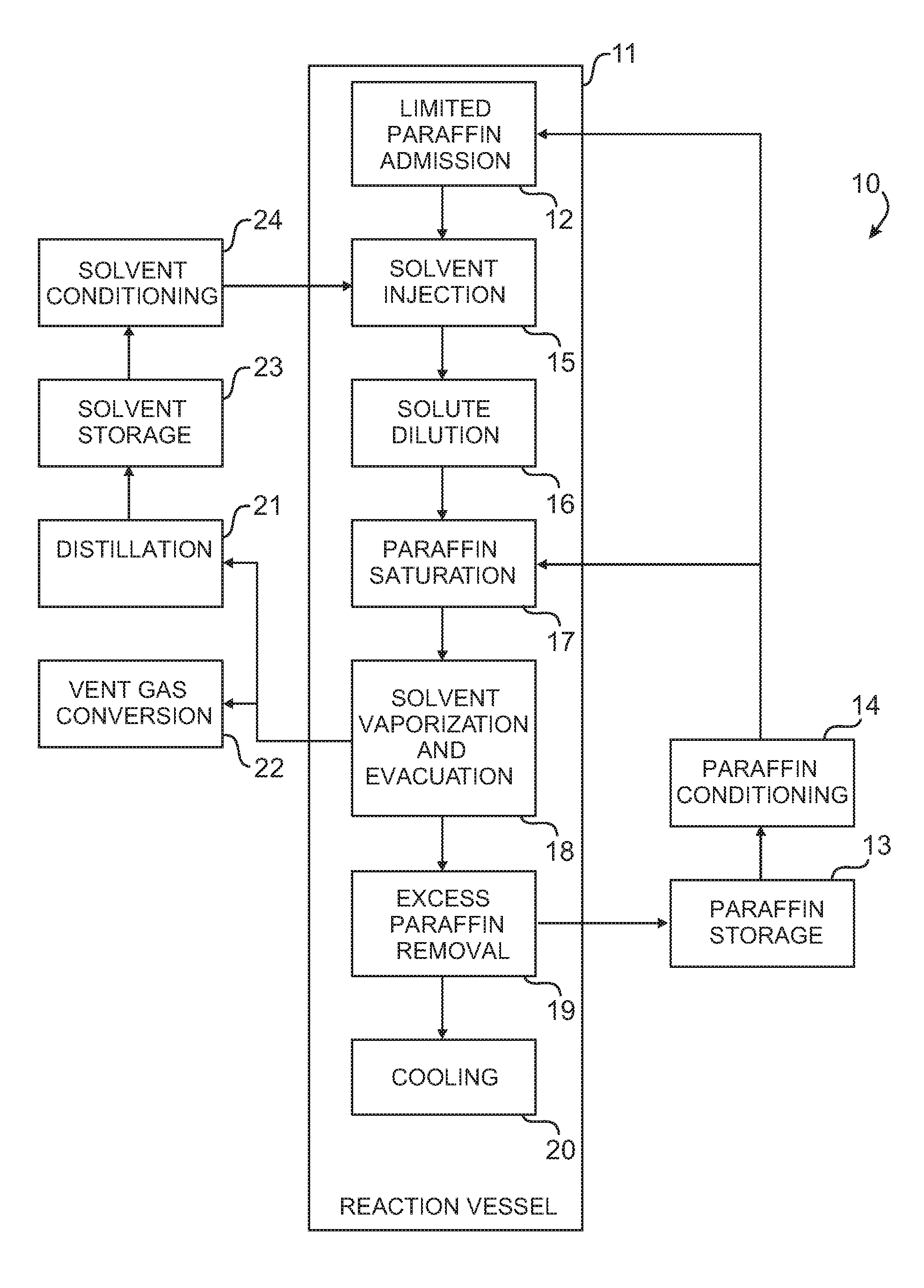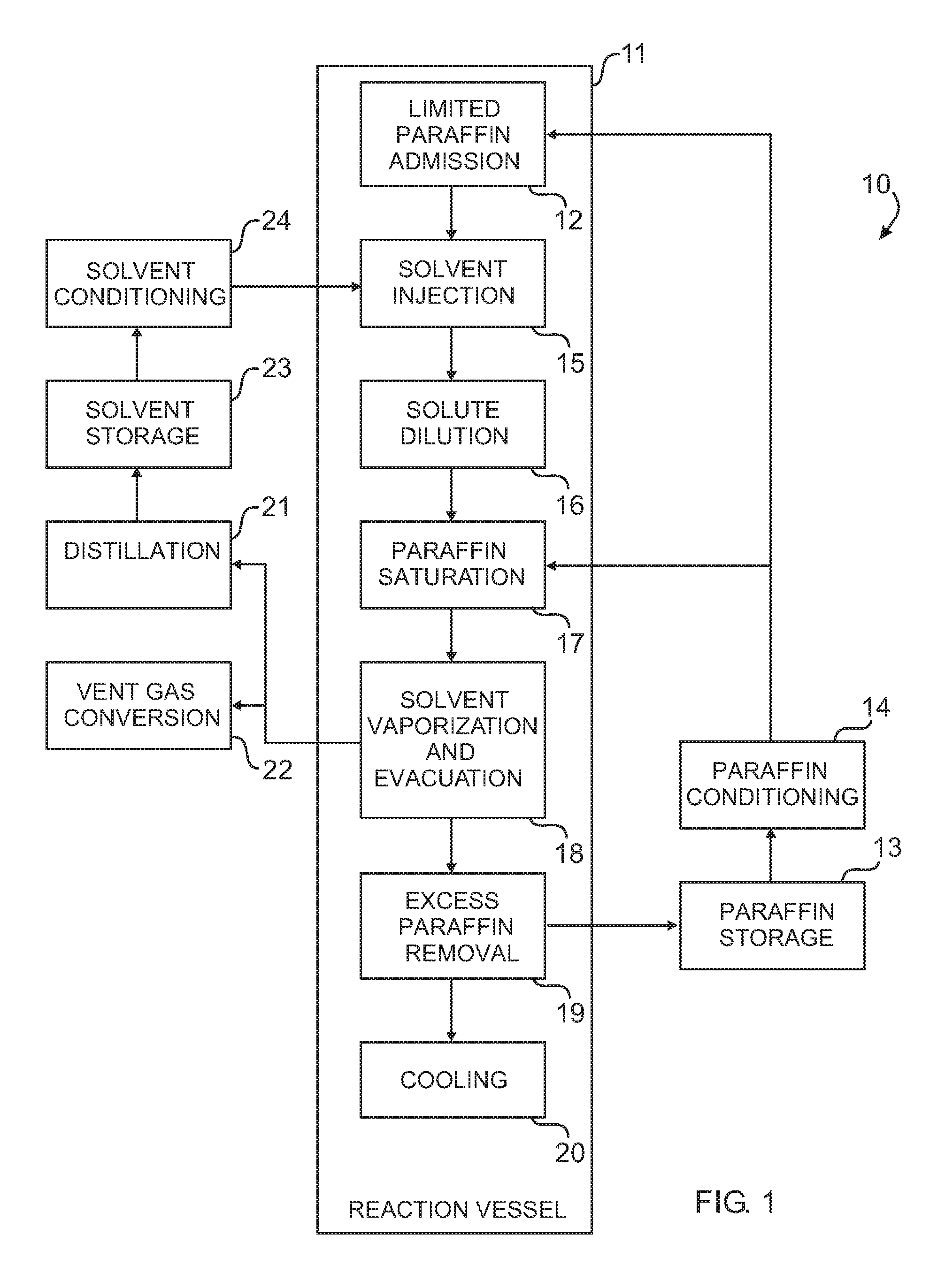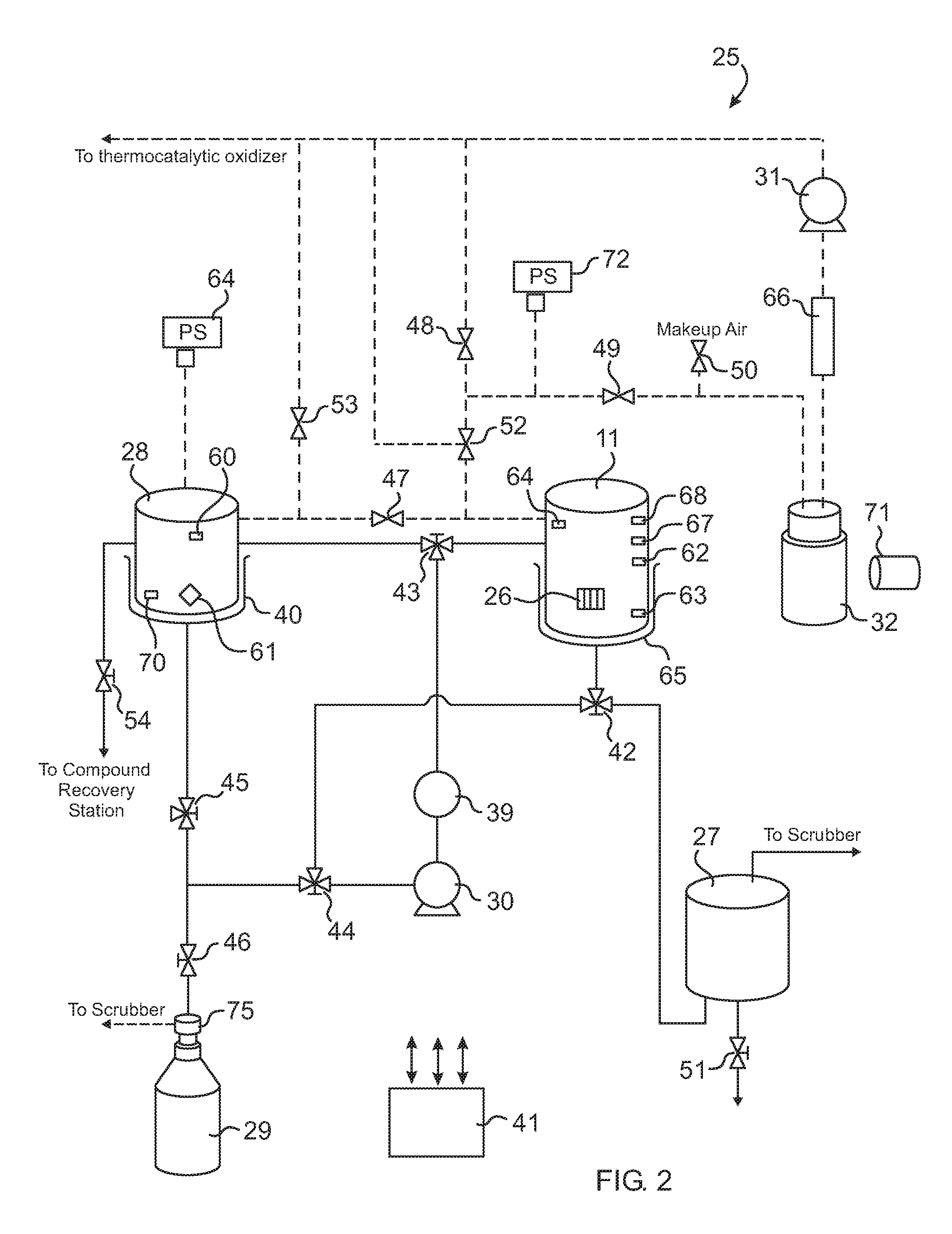Histological specimen treatment apparatus and method
a technology for treating apparatus and specimens, applied in the field of tissue specimen preservation techniques and instruments, to achieve the effect of reducing the temperature of the container below the melting point of paraffin and less cutting
- Summary
- Abstract
- Description
- Claims
- Application Information
AI Technical Summary
Benefits of technology
Problems solved by technology
Method used
Image
Examples
example 1
[0114]
TABLE 1.0Composition of the dissolving compoundComponent Weight-percentAcetone45.8Hexane25.4DMSO7.02-propanol19.8Paraffin2.0
[0115]
TABLE 1.1Typical processing times and specimen type.Reference Color codeProcessingImpregnationTissueNo.CodeTime (minutes)Time (min)Type101green1030Breast tissue 2 mm102purple1030liver 2 mm103green1030liver 2 mm104green2030liver 5 mm105purple3030Breast tissue 5 mm106purple3030Breast tissue 5 mm107green2030liver 5 mm108purple3030Breast tissue 4 mm109green3030liver 4 mm110purple3030Liver 4 mm111purple3030Breast tissue 2 mm112purple3030Breast tissue 4 mm
[0116]Control Samples:
[0117]Tissue specimens 2 mm to 5 mm thick were used. The reagents and time schedule provided below is used as the control procedure in all examples. After processing, embedding, and sectioning; reference slides are compared with slides processed by the present exemplary embodiment of the invention. Hematoxylin-eosin staining is used for pathological comparison.
[0118]
TABLE 1.2Control...
example 2
[0124]The following is an example of batch solvent blending within the reaction container. Table 2.0 shows wt-% of components before and after batch reactor blending.
[0125]
TABLE 2.0Solvent Batch blending Composition ofDissolving Compound before and after.Wt-% Before ReactorWt-% After ReactorComponentBlendingBlendingAcetone65.5561.51Hexane16.7615.73DMSO4.594.312-propanol13.1112.30Paraffin—6.15
[0126]A measured volume of non-Paraffin based solvent is loaded into the solvent regenerator and heated to 60° C. Liquid Paraffin is transferred into the sealed and heated reaction container until the Paraffin level indicator switch is triggered. Dissolving compound is transferred from the solvent regenerator to the reaction container. The compound and Paraffin are thoroughly blended for 5 minutes. The blend is then transferred to the regenerator. The container is evacuated and loaded with the specimens. The histoprocessing begins.
[0127]
TABLE 2.1Typical processing times and specimen type.Process...
example 3
[0133]The following is another example of batch solvent blending within the reaction container. Table 3.0 shows wt-% of components before and after batch reactor blending.
[0134]
TABLE 3.0Solvent Batch blending Composition ofDissolving Compound before and after.Wt-% Before ReactorWt-% After ReactorComponentBlendingBlendingAcetone17.4516.68Hexane43.1638.80DMSO5.635.062-propanol33.7610.12Paraffin—30.35
[0135]
TABLE 3.1Typical processing times and specimen type.ProcessingImpregnationReferenceColor codeTimeTimeTissueNo.Code(minutes)(min)Type301green1030Breast tissue 2 mm302purple1030liver 2 mm303green1030liver 2 mm304green2030liver 5 mm305purple3030Breast tissue 5 mm306purple3030Breast tissue 5 mm307green2030liver 5 mm308purple3030Breast tissue 4 mm309green3030liver 10 mm310purple3030Liver 10 mm311purple3030Breast tissue 2 mm312purple3030Breast tissue 4 mm
[0136]The dissolving compound of Table 3.0 in the solvent regenerator is heated to an equilibrium temperature of 60° C. and a pressure of...
PUM
 Login to View More
Login to View More Abstract
Description
Claims
Application Information
 Login to View More
Login to View More - R&D
- Intellectual Property
- Life Sciences
- Materials
- Tech Scout
- Unparalleled Data Quality
- Higher Quality Content
- 60% Fewer Hallucinations
Browse by: Latest US Patents, China's latest patents, Technical Efficacy Thesaurus, Application Domain, Technology Topic, Popular Technical Reports.
© 2025 PatSnap. All rights reserved.Legal|Privacy policy|Modern Slavery Act Transparency Statement|Sitemap|About US| Contact US: help@patsnap.com



